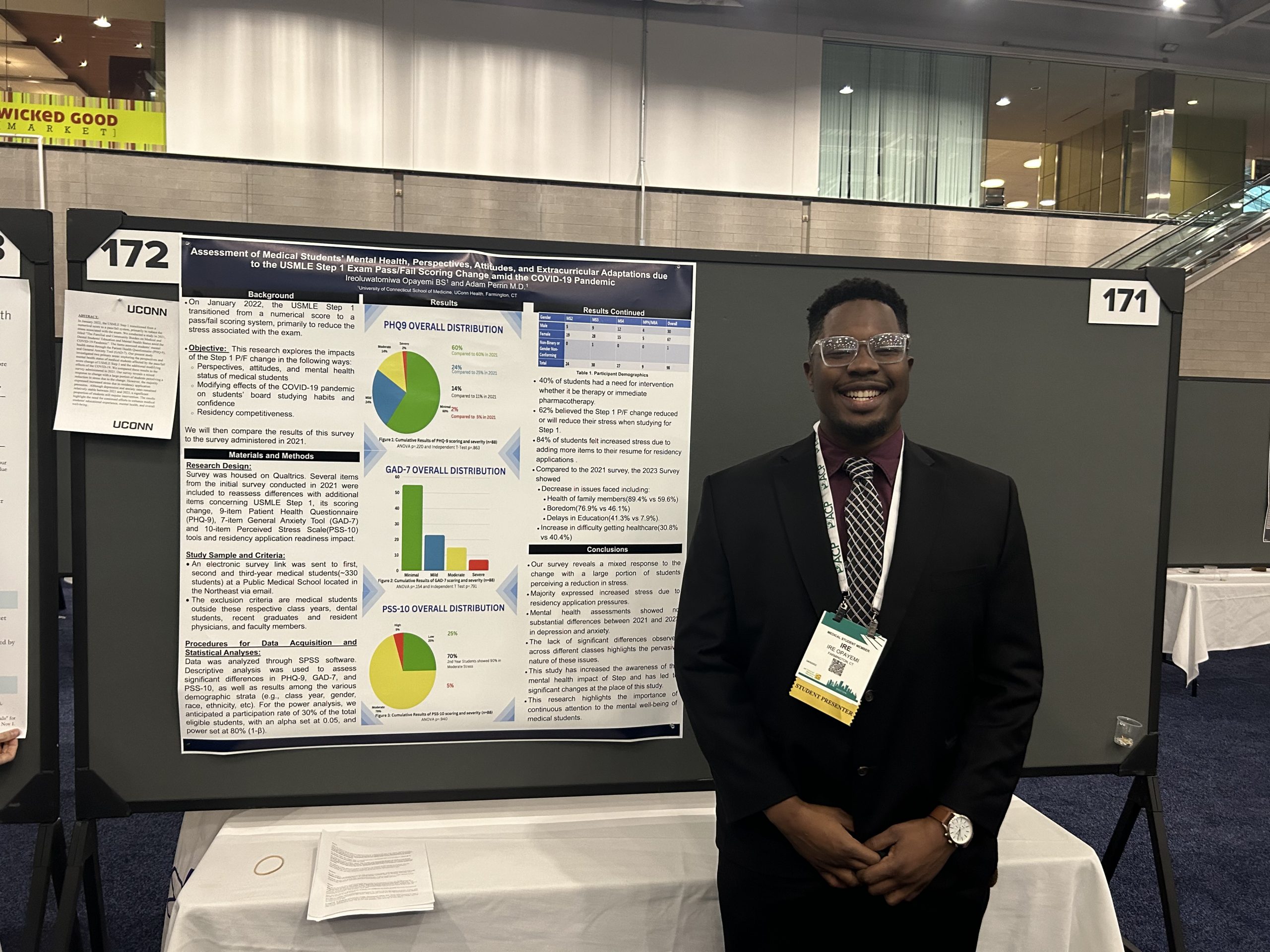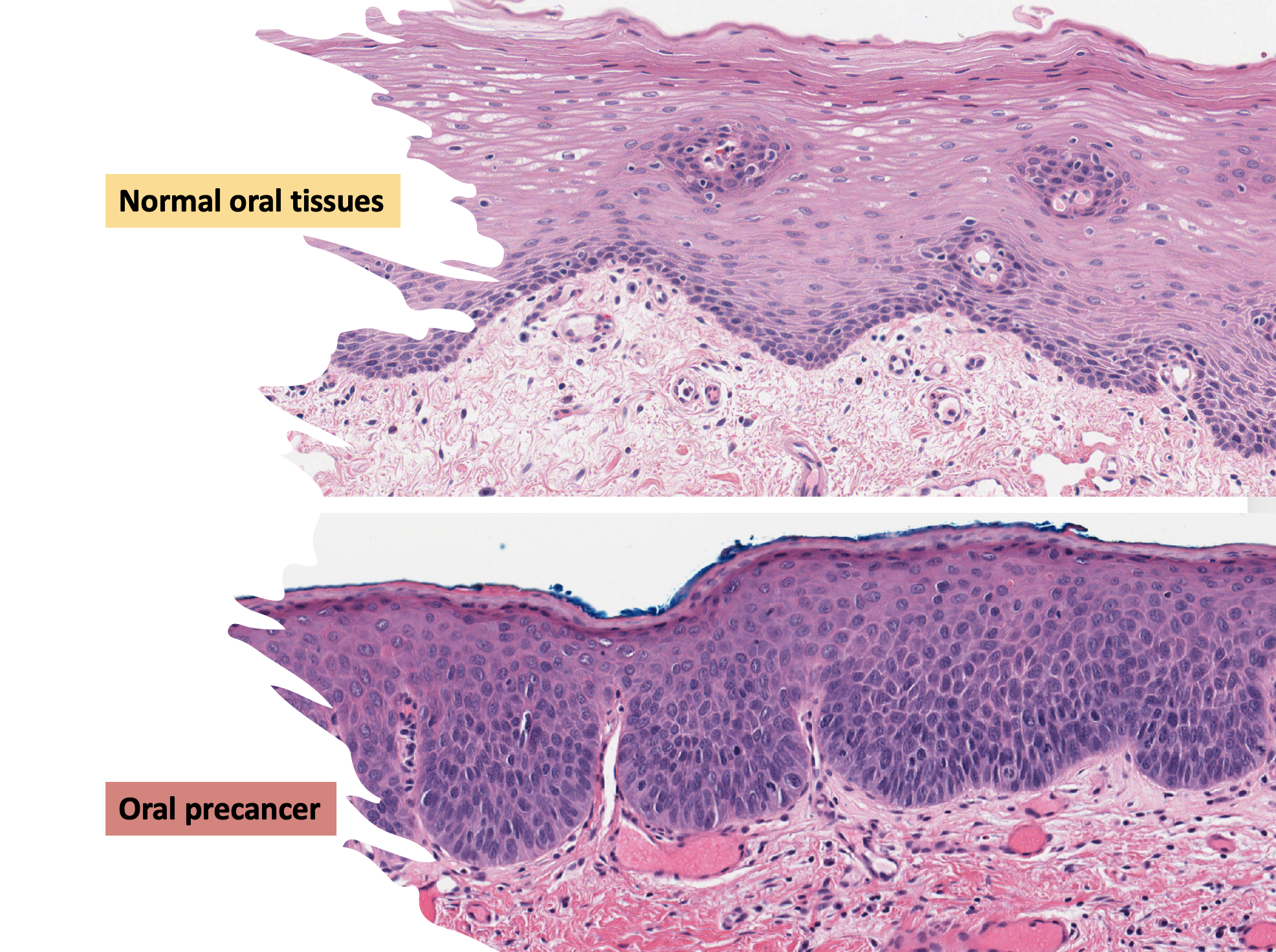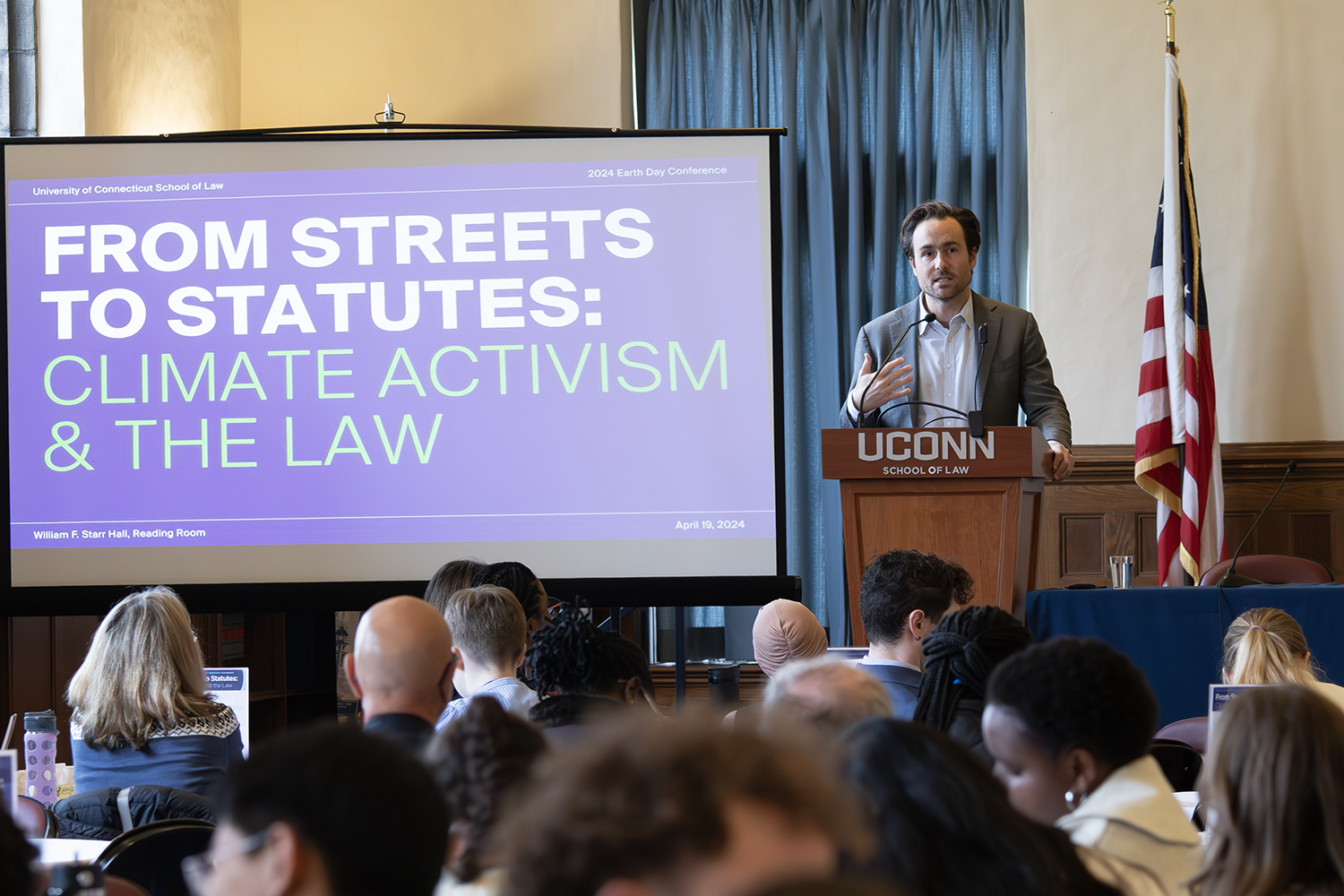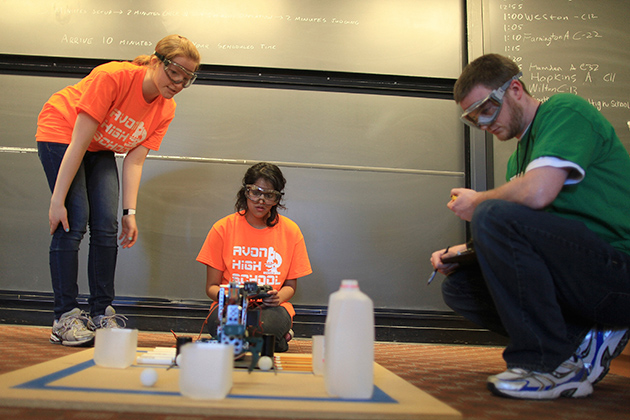
Mary Kaminski and Aneesha Ramen, clad in bright orange t-shirts, crouched intently over their robot arm, an intricate set of pencil-sized metal pipes and colorful wires sitting on the floor of a brightly-lit UConn classroom on Saturday afternoon.
Armed with stopwatches and clipboards, three judges watched as one of the Avon High girls knelt, using a Nintendo-like remote controller to move the arm, and the other spoke measured, precise commands.
“Try for the nail,” Kaminski said. “Forward, now turn, and … that’s good, drop it ….”
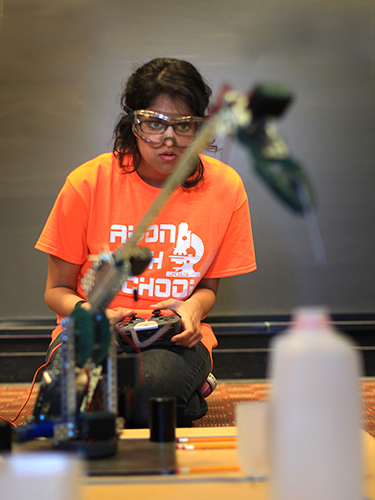
The robot’s claw grasped a carpenter’s nail from its plywood perch, made some halting turns and extensions, and dropped the nail down the narrow spout of a plastic milk container. A judge called an end to their three-minute time limit, and the room erupted into applause.
The girls were two of about 500 students from 21 high schools across the state who traveled to the Storrs campus this weekend to compete for a chance at prizes, scholarships, and professional development opportunities in the annual Connecticut Science Olympiad.
The series of science challenges, organized like an Olympic track meet, was sponsored by the College of Liberal Arts and Sciences and led by science professors from UConn, Yale University, and Connecticut science and engineering businesses.
“We’re proud to support our state’s talented young scientists as they put their problem-solving skills to the test,” said Dean Jeremy Teitelbaum of CLAS, who attended a demonstration by the UConn Chemistry Club and gave remarks at the closing awards ceremony.
The Science Olympiad is a great example of the ways UConn is developing the pipeline of Connecticut students prepared to go to college and study STEM disciplines.
Teams of up to 15 members from high schools around Connecticut competed in individual events, and the total score for all team members determined the team’s final score. Throughout the day, students moved from laboratories in the Chemistry Building to classrooms in Oak Hall and the School of Business, competing in events like forensics, protein modeling, astronomy, remote sensing, detecting diseases, forestry, thermodynamics, and technical problem-solving.
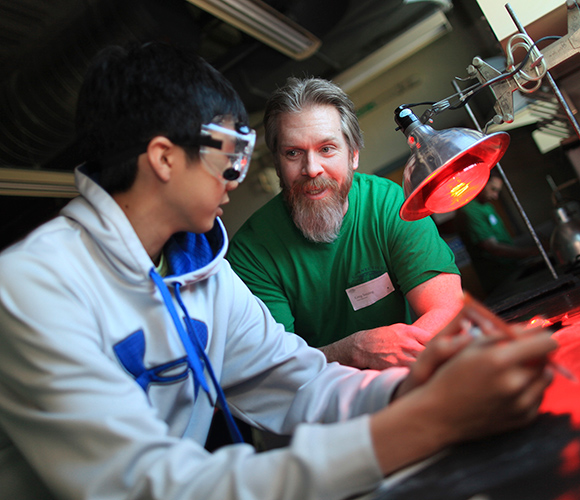
United Technologies scientist Treese Campbell, a UConn alumna who earned her Ph.D. in the lab of chemistry professor Steven Suib in CLAS, oversaw the Chemistry Lab event.
“It’s so important that students take what they learn in a science classroom and apply it to something outside the classroom,” she said. “For most of the events, they arrive and don’t know what they’ll be asked to do – it’s a complete surprise.”
The students are also curious about her experiences as a chemist, she says.
“I’ve talked with many students today and they’re curious about what I do,” she said. Although they still have many years to decide on their careers, Campbell said, it’s great to show them many different types of science in all the different events.
Lauren D’Arinzo, a senior at Brien McMahon High School in Norwalk who hopes to study neuroscience in college, also appreciated the multitude of events.
“It’s a good way to explore different areas of science,” she said. Although she’s pretty good in biology and math, she explained, at the Olympiad she participated in chemistry competitions.
Science teacher Tracy Turcotte from Jonathan Law High School in Milford noted that the biggest benefit the students get is working independently.
“They prepare and plan for this completely on their own,” she said. “It’s their own motivation that drives them to do it, outside of school hours.”
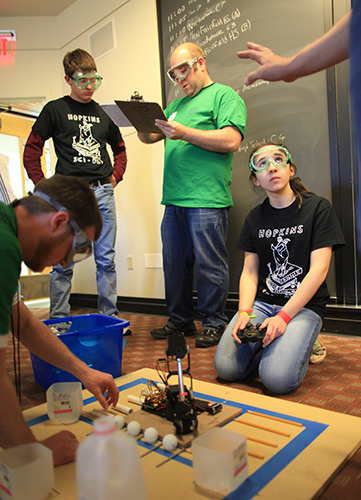
“These kids have given up so many of their weekends to study science,” added Cynthia Peterson, UConn professor of physics and director of the Astronomy event. “They’re not at the mall on a Saturday – they’re studying science and getting ready to work under pressure. We’re really proud of them.”
This year’s winning team, one of two teams from Hopkins High School in New Haven, earned a place at the 28th National Science Olympiad at Wright State University, Ohio in May. There they will compete with other high schools from around the country for cash prizes, scholarships, and professional development opportunities amounting to about $50,000.
“The Science Olympiad is a great example of the ways UConn is developing the pipeline of Connecticut students prepared to go to college and study STEM disciplines,” said UConn President Susan Herbst. “These events give high-schoolers an opportunity to see what science is all about at the university level.”

